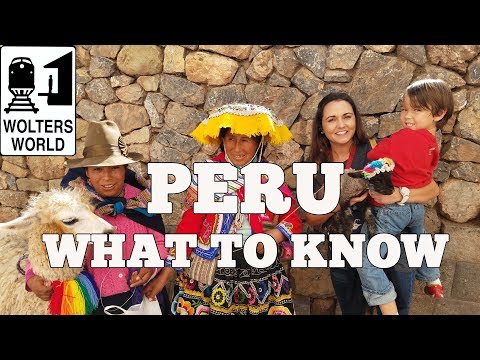
Peru, a country rich in cultural heritage and natural beauty, is nestled on the western coast of South America. It’s a land where ancient traditions seamlessly blend with modern life, and its diverse landscapes range from the arid plains of the Pacific coast through the peaks of the Andes to the tropical Amazon Basin. Whether you’re drawn by the allure of Machu Picchu, the mystery of ancient civilizations, or the vibrant biodiversity, Peru promises an unforgettable travel experience. However, before you embark on this adventure, there are several important factors to consider to ensure your trip is as enriching and enjoyable as possible.
#### 1. Best Time to Visit
Peru’s climate varies significantly depending on the region. The coastal area features a mild climate with little rain, making it an excellent year-round destination. However, if you’re planning to visit the highlands or the jungle, timing is crucial. The dry season (May through October) is ideal for hiking in mountainous regions like Cusco and visiting Machu Picchu due to fewer rain showers and clearer paths. Conversely, the Amazon Rainforest is best visited during the wet season (December through May), when rivers are higher and more accessible by boat.
#### 2. Essential Travel Documents
Travelers to Peru must have a valid passport with at least six months remaining before expiration. Most countries in North America and Europe do not require a visa for stays up to 183 days but always check visa requirements for your specific country before booking your trip.
#### 3. Health Precautions
Before traveling to Peru, it’s wise to consult with a healthcare provider about vaccinations. Typically recommended vaccines include Hepatitis A and B, Typhoid, and Yellow Fever (especially if visiting the Amazon). Malaria prophylaxis might also be recommended depending on your itinerary. Additionally, altitude sickness can be a concern in high-altitude areas like Cusco or Puno; acclimatizing gradually and staying hydrated can help mitigate effects.
#### 4. Currency & Costs
The Peruvian Sol (PEN) is Peru’s official currency. Credit cards are widely accepted in cities and tourist areas but having local currency on hand for small purchases or rural areas is vital. Daily expenses can vary significantly: while luxury services are available at international prices, street food and market shopping can offer deeper dives into local life at lower costs.
#### 5.Cultural Etiquette
Peruvians are generally warm and hospitable; however respecting local customs is essential:
– Greetings involve a handshake or one kiss on the cheek.
– Dress modestly especially when visiting religious sites.
– Learn some basic Spanish phrases; it’s appreciated even though many people in tourist areas speak English.
– Always ask permission before photographing people.
#### 6.Food & Drink
Peruvian cuisine offers an exquisite culinary journey marked by staples like ceviche (raw fish marinated in lime juice), lomo saltado (stir-fried beef), and numerous potato dishes — after all, Peru boasts over 4,000 types of potatoes! When dining out, stick to busy establishments with good turnover and drink bottled water only.
#### 7.Places To Visit Beyond Machu Picchu
While Machu Picchu is a must-visit landmark when in Peru:
– Explore Lima’s vibrant food scene.
– Experience Arequipa’s stunning architecture.
– Wander through Cusco’s cobblestone streets.
– Venture into Iquitos for an Amazonian adventure.
#### Conclusion:
Traveling to Peru offers an opportunity not just to witness spectacular sights but also immerse oneself in centuries-old culture enhanced by modern vibrancy. Proper preparation regarding timing your visit right along with health precautions will ensure that your stay not only meets but exceeds expectations! Whether wandering among ancient ruins or navigating vast rainforests teeming with life — visiting Peru remains an unparalleled journey into history intertwined with wild nature’s marvels.
